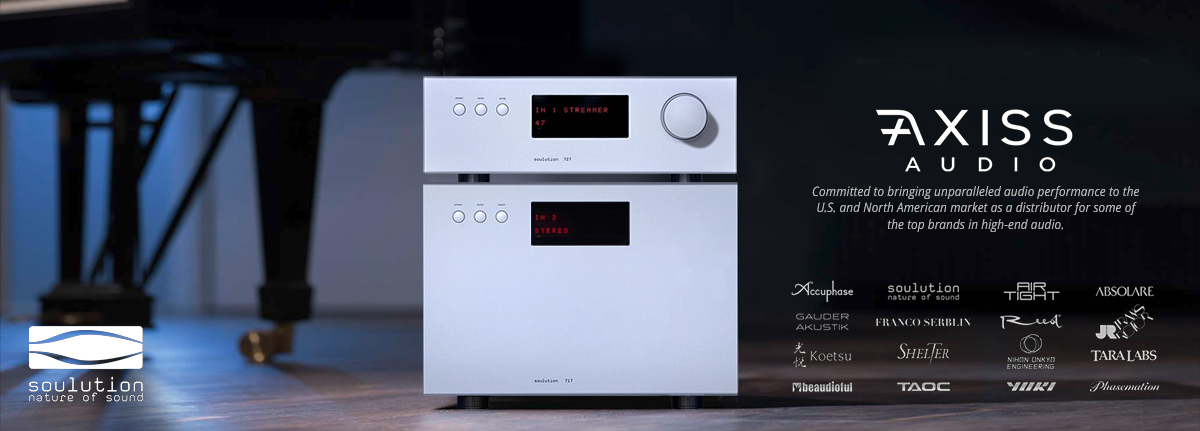Uh, try $2.00...so many high dollar pre amps costing thousands with a $15 pot..
Our MA-1 amps (in the shipping box) weigh less than half of what those BATs weigh and make over twice the power. Tube amps don't have to be heavy, but they often are...
Uh, try $2.00...so many high dollar pre amps costing thousands with a $15 pot..
No output transformer and the larger transformers (there are 3 per chassis on most of our amps) are toroids. Because the amps are fully differential and balanced (One of the BAT founders was a customer of ours before they got started; we've been doing balanced operation longer than anyone else in high end audio at this point) they're pretty resistant to hum fields so we can use aluminum for our chassis work. So a 140 watt monoblock weighs only 44 pounds in the shipping box with all the tubes.How do you minimize weight?? Between the power and output transformers it seems like no matter what you do there is going to be some hefty weight compared to say a class d switching amp
(...) The class D stuff we've been working on won't be nearly as heavy...
That might make it atomic!Are you going to use it to pre-heat filaments?
Uh, try $2.00...
Our MA-1 amps (in the shipping box) weigh less than half of what those BATs weigh and make over twice the power. Tube amps don't have to be heavy, but they often are...
The class D stuff we've been working on won't be nearly as heavy...
We just serviced out an Accuphase preamp made back in the 1970s. IMO it was overbuilt insofar as the signal circuitry was concerned, but had nice power supplies and everything plugged into edge connectors- very nice construction.I asked him what about old Accuphase...his reply..it's the McIntosh of Japan
I have been buying from Brent for over 10 years now...great stuff. I actually have NOS tubes now I do not need having sold the CJ GAT 2. 6922/6DJ8. All from Brent. Go with his, and if you need more, let me know.Well, my amps are not failing, as just not fully shining due to tubes noise I'm struggling to eliminate.
Last chance saloon...Bazelio has put me onto Brett Jesse of www.audiotubes.com, and he's put a little package of 6DJ8 tubes, 60s Mazdas and 70s Mullards telecommunications grade tubes, for my Nat Utopia pre.
Not cheap, but well worth it if they succeed.
Hi Lee.I have been buying from Brent for over 10 years now...great stuff. I actually have NOS tubes now I do not need having sold the CJ GAT 2. 6922/6DJ8. All from Brent. Go with his, and if you need more, let me know.
Hey Kingrex, just received my Marantz 4400 back from a experienced long term tech. His letter stated...I put a lot of time into the unit, "everything works". But he said from now on your on your own...old and problematic,which is fine. But he packed the thing poorly and the 60 pound receiver moved around in shipment. So i'm screwed and have a right channel only paper weight...until the next time I feel like dealing with it. Damn....
Thanks! Just got it fixed...Woopee, These 4400's I learned have four jumpers on the back and if the're not cleaned or seated all positively a channel will cut out. Also there is a "remote - local" switch that should be set on local. I must say it sounds great with my JBL's and has power to spare. It is a beauty and wanted one when I first saw it at Pacific Stereo 47 years ago. Funny how that isthat must hurt.. Sorry to hear, I can feel your pain.. That’s a classic piece.. hope you get it sorted out with an easy fix..
Western Electric built line amplifiers which were powered remotely and intended to operate for a very long time- these were built into the intercontinental phone lines and they seemed to hold up- under the ocean... If you know what you are doing making a reliable tube amp isn't a problem.
You made me curious about this and how they implemented it. Here are a few excerpts and facts from some reading on the subject.. This was in the 50’s and this particular line had no problems over its entire service life of 20 years. Fascinating achievement..
20-Year Tubes for Transatlantic Cable
Must operate reliably and unattended on ocean floor.
The new transatlantic telephone cable system depends on the use of hundreds of specially designed very long life vacuum tubes housed in built-in repeaters in the cables lying on the ocean bottom. Repeaters are installed at intervals of about 40 miles in each of the pair of 2000-nautical-mile-long deep-sea cables between Newfoundland and Scotland. Each of the 102 repeaters is a 3-tube circuit used to overcome the attenuation of the cable and to equalize its nonlinear frequency response.
Two main types of tubes are in operation. One, the 6P12, was developed by the British Post Office for use in the shallow-water portion of the system between Newfoundland and Nova Scotia. The other, the 175HQ, was developed at Bell Telephone Laboratories, for use in the deep-sea portion of the system between Newfoundland and Scotland.
Tubes essentially like those used have been on life test for about 17 years with no failure and there is reasonable probability that these tubes will operate without failure for at least 20 years.
| Steve Williams Site Founder | Site Owner | Administrator | Ron Resnick Site Owner | Administrator | Julian (The Fixer) Website Build | Marketing Managersing |
















